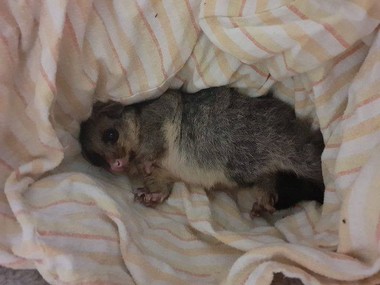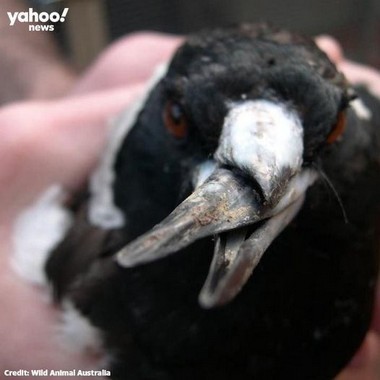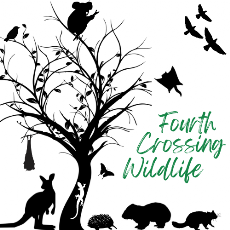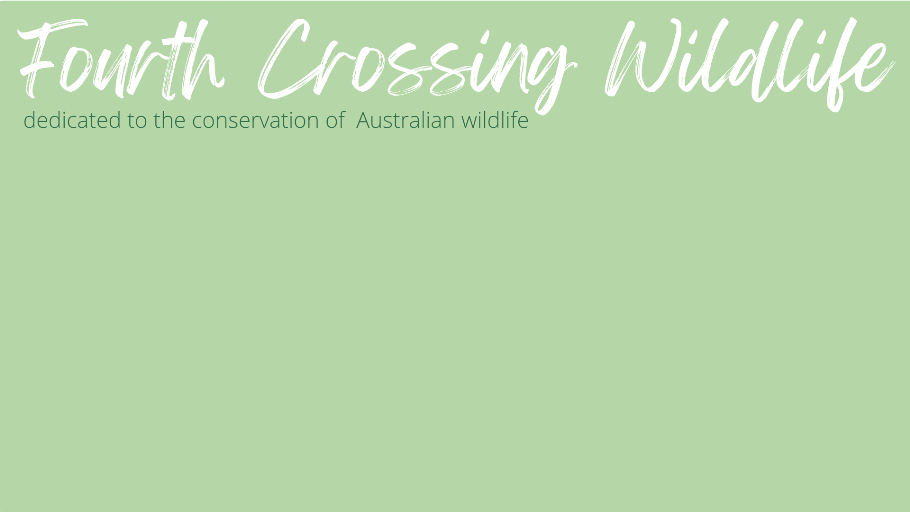Wildlife Resources
Feeding Wildlife
by Edwina Laginestra
 a young brushtail possum that came in with bloat being fed high sugar/calorific food  a magpie with severe calcium deficiency that affected her beak and leg growth | This is a contentious topic - vets, zoos, carers, researchers all weigh in on the debate with their information. They may all have different perspectives and experiences. There are so many different species of wildlife with different needs, there is no way there can be one answer to "should I feed wildlife"? The answers range from no, through to "we have removed habitat so must atone". Before answering you have to think about context and why you want to feed wildlife: Do they have enough native food to eat? (Has their habitat and food sources been removed/cleared, has there been a natural disaster that has displaced them or destroyed habitat?) What is their natural behaviour? (What do they eat in the "wild"? Can they look after themselves? Is the system in balance regarding food and population?) Why do you want to feed them? (To get them through tough times? You like them around? You like the interaction? You are trying to protect yourself from future attacks?) Could your feeding cause problems? (What would happen if you went on holidays or moved? Does your feeding attract predators? Could they be injured by others when you create trust, does it attract large numbers that could spread diseases?) Vets and carers approach the question with the injuries and diseases they have to treat, the spread of beak and feather disease, the calcium deficiencies leading to malformations, bloat, bacterial problems. Zoos and people with licences to keep wildlife have to look after wildlife totally - they provide all food and mental/social needs, they are looking for the best diet that provides all nutrients and would mimic some behaviour in the wild. Researchers may monitor behaviour in the wild and see how the survivors in a tough world improve the gene pool. They will all answer differently about members of the public feeding wildlife. What to feed them? What do they eat in the wild - are they herbivores, foliovores, omnivores, carnivores, insectivores? If you don't know then don't feed them until you have done some research. "Oh they love xxx" is not helpful - kids love lollies but you wouldn't have them on that diet 24/7. First rule - have water out - at different levels but providing shade and protection from predators. Have sticks or pebbles so anything that falls in can get out (including your pool - tie a rope to drape in or have a float they can get out on). Second rule - plant native trees - if they don't eat the flowers and leaves, they may feed on the insects they attract, or sap or pests. Third rule - NO processed food. These are generally lacking in nutrients the animal needs, are soft and can get stuck in teeth, palate, beak. Once stuck they can rot the teeth or beak and lead to bacterial problems. Food often needs texture and fibre. Fourth rule - keep it fresh and clean. Old or rotten food can cause gas or bacterial issues. Clean up regularly to avoid attracting other pests (eg rodents) or creating infection. Fifth rule - do not make them reliant on you. They must be able to forage for themselves and learn protective behaviours. Good food may include insects (like mealworms), nectar mix (with nutrients they need), off cuts coated in insectivore to provide nutrients, even a visit while you are gardening to collect the worms or grubs allows you to make friends. "Oh I only do this every few days" shows understanding regarding the need for them to forage but are you the only one feeding? Are you getting an unnaturally high population of one species? Feeding wildlife must firstly be about maintaining the health of the wildlife. (This article was written for Australian Native Animals Facebook site in December 2020) |


